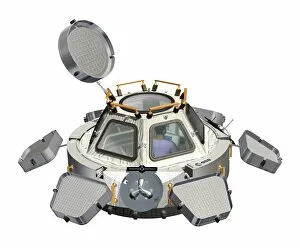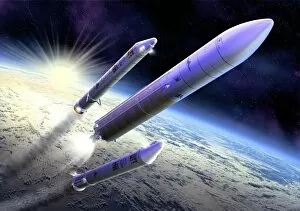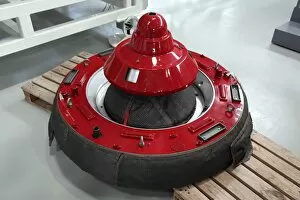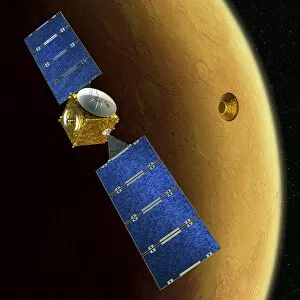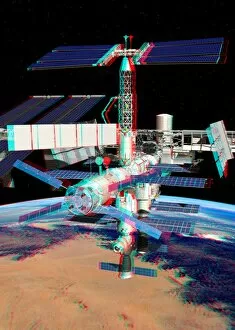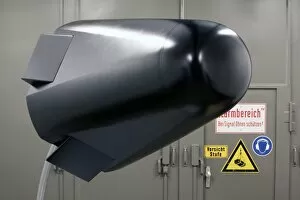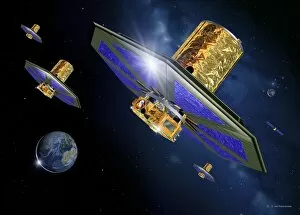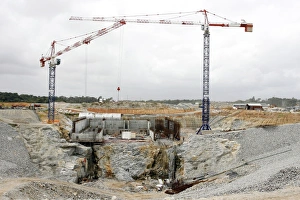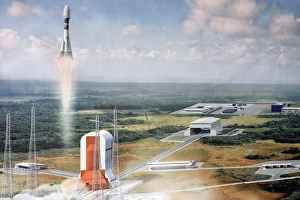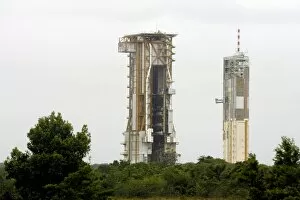European Space Agency Collection (page 4)
The European Space Agency (ESA) has been at the forefront of space exploration and innovation for decades
All Professionally Made to Order for Quick Shipping
The European Space Agency (ESA) has been at the forefront of space exploration and innovation for decades. From the Cassini-Huygens probe's remarkable journey to Saturn, capturing breathtaking images of the ringed planet and its moons, to spacecraft landing on the Moon, meticulously mapping its surface with precision. One cannot overlook ESA's Delta mission to the International Space Station (ISS), where astronauts conduct groundbreaking research in microgravity conditions. The Ariane 5 launcher plays a crucial role in these missions, propelling payloads into space with incredible power and accuracy. Artwork depicting an Ariane 5 rocket deploying a payload showcases ESA's commitment to advancing scientific knowledge through cutting-edge technology. The Ariane series of launchers stands as a testament to Europe's prowess in space exploration. Not only does ESA collaborate with international partners like NASA, but it also contributes significantly to their missions. For instance, when SpaceX's Crew Dragon named Freedom by the Crew-4 astronauts embarked on its journey atop Falcon 9 rocket, it was made possible through joint efforts between ESA and NASA. The crew members of the Crew-4 mission - Kjell Lindgren, Bob Hines, Jessica Watson, and Samantha Cristoforetti - exemplify humanity's quest for discovery beyond Earth. Their dedication is matched by that of other astronauts from various nations who work together harmoniously inside Kennedy Space Center’s Neil A suit room. As we marvel at these achievements and collaborations within our global space community, let us remember that ESA continues pushing boundaries for future generations' benefit. Through their unwavering determination and passion for exploring what lies beyond our planet’s atmosphere, they inspire us all to reach for the stars.



